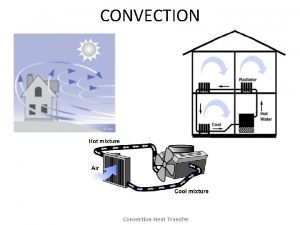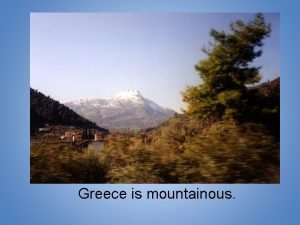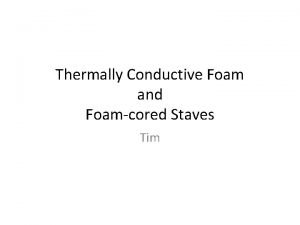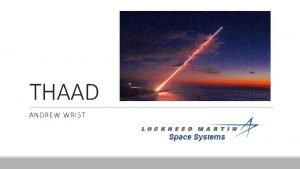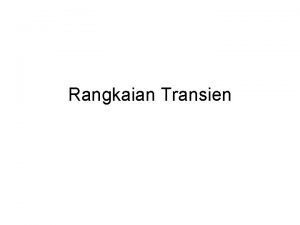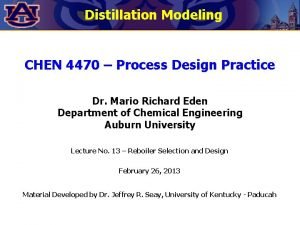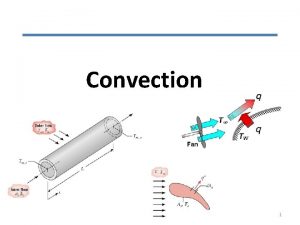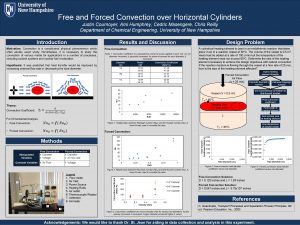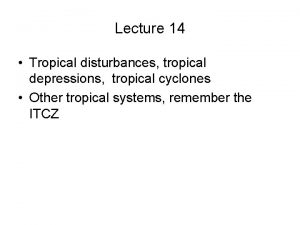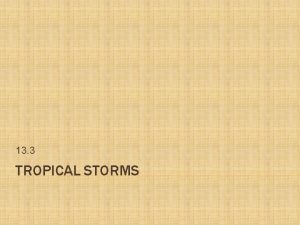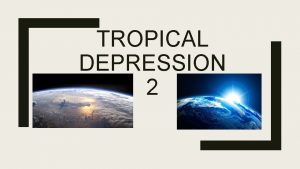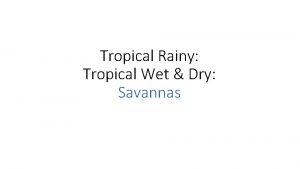Thermally Forced Convection over a Mountainous Tropical Island

















- Slides: 17

Thermally Forced Convection over a Mountainous Tropical Island Wang, C. -C. , and D. J. Kirshbaum, 2015: Thermally forced convection over a mountainous tropical island. J. Atmos. Sci. , 72, 2484– 2506.

Outline Observations Control simulations Sensitivity tests Heat-engine theory Conclusions Reference

Observations Four week-wind events on 18 April 2011. Primarily focus on the island thermal circulations, rather than the cloud microphysics.

Observations Satellite data: effective albedo L 3, L 4

Control simulations Broad leaf forest land skin temperature=292 K Sea surface temperature=300 K

The vertically integrated surface-based horizontal mass flux across the island perimeter. dz ds ds C

Island cloud fraction Island convergence fraction 0 -500 m AGL mean Sensitivity tests a. Topographic forcing

Island cloud fraction Convective cores at z=1. 8 km 0 -500 m AGL mean Sensitivity tests b. Boundary layer winds

0 -500 m AGL mean c. Cloud feedbacks Sensitivity tests NORNCOD-REF Shut off the microphysics scheme. Island cloud fraction Convective cores at z=1. 8 km Shut off the autoconversion Shut off the clouds effect on Shut off the both RN and COD. from clouds to rain. optical depth.

Circulation strength Island mixed layer depth Diabatic temperature difference Heat-engine theory With terrain Without terrain

Conclusions The cumulus convection was driven by island thermal forcing. Experiments varying the ambient winds indicated that the island thermal anomaly was controlled by the residence time of air parcels over the heated island. The heat-engine theory : the elevated terrain in the mountain case reduced the mixed-layer depth and thus lowered the circulation’s thermodynamic efficiency. (Contrary to Tian and Parker 2003; Kirshbaum and Wang 2014).

Reference Kirshbaum, D. J. , and C. -C. Wang, 2014: Boundary layer updrafts driven by airflow over heated terrain. J. Atmos. Sci. , 71, 1425– 1442, doi: 10. 1175/JAS-D-13 -0287. 1. Smith, R. B. , P. Schafer, D. J. Kirshbaum, and E. Regina, 2009: Orographic precipitation in the tropics: Experiments in Dominica. J. Atmos. Sci. , 66, 1698– 1716, doi: 10. 1175/2008 JAS 2920. 1. Smith, R. B. , and Coauthors, 2012: Orographic precipitation in the tropics: The Dominica Experiment. Bull. Amer. Meteor. Soc. , 93, 1567– 1579, doi: 10. 1175/BAMS-D-11 -00194. 1. Tian, W. S. , and D. J. Parker, 2003: A modeling study and scaling analysis of orographic effects on boundary layer shallow convection. J. Atmos. Sci. , 60, 1981– 1991, doi: 10. 1175/1520 -0469(2003)060, 1981: AMSASA. 2. 0. CO; 2. Wang, C. -C. , and D. J. Kirshbaum, 2015: Thermally forced convection over a mountainous tropical island. J. Atmos. Sci. , 72, 2484– 2506.

Thanks for your attention!

Control simulations Z=300 m Z=1800 m

leg 3, leg 4

Observed/Simulated zonal wind w variance cloud mass flux cloud fraction rain fraction

1000 -1700 LST accumulated rainfall Leg 4 average values
 Characteristic length for cylinder
Characteristic length for cylinder What 4 seas surround the balkan peninsula
What 4 seas surround the balkan peninsula Thermal conductive foam
Thermal conductive foam Thaad energy management steering maneuver
Thaad energy management steering maneuver What are islands
What are islands Angel island vs ellis island
Angel island vs ellis island Ellis island and angel island venn diagram
Ellis island and angel island venn diagram Island of the blue dolphins island map
Island of the blue dolphins island map Over the mountain over the plains
Over the mountain over the plains Siach reciting the word over and over
Siach reciting the word over and over Handing over and taking over the watch
Handing over and taking over the watch Forced vibration and resonance
Forced vibration and resonance What is forced choice questions
What is forced choice questions Forced response
Forced response What is forced association
What is forced association Ames room illusion
Ames room illusion Diaphragm attachments
Diaphragm attachments Forced circulation reboiler
Forced circulation reboiler
